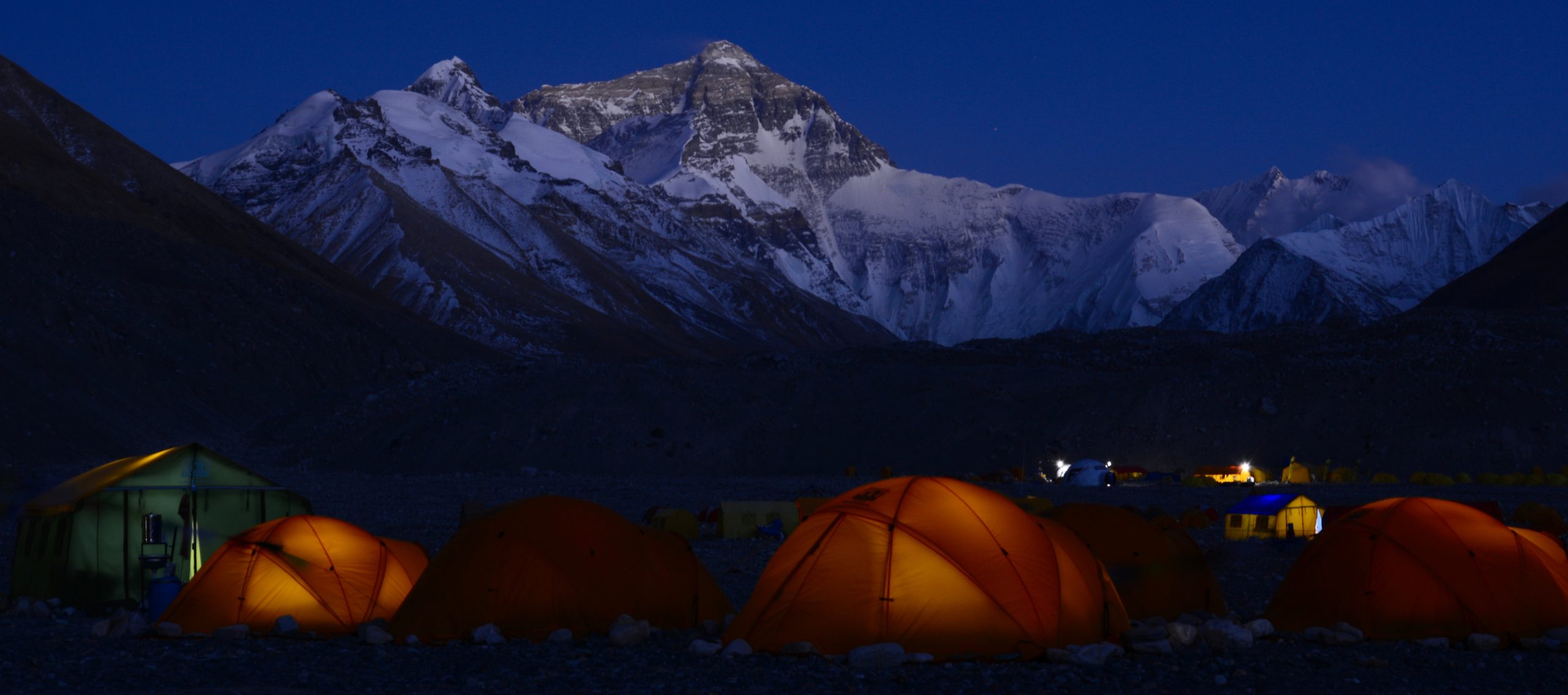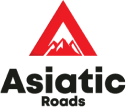
“AN OVERLAND JOURNEY FROM LHASA TO KATHMANDU VIA EVEREST BASE CAMP”
- Home /
- Tibet /
- Overland Tours /
- “AN OVERLAND JOURNEY FROM LHASA TO KATHMANDU VIA EVEREST BASE CAMP”
INTRODUCTION:
TIBET- a sacred land of myths and mysteries was opened for tourism in 1985. Before this, it avoided influence from the west and this country developed its unique culture and religion independently. Since the spiritual leaders governed Tibet, monasteries and religious institutions were the backbone of power so the importance and prestige were shown by the size and magnificent architecture of these buildings. Tibetan Buddhism contains many elements of their older religion,” Bon Po” which worshipped the sky, moon, sun, fire, soil and even evil spirits and this is why a monastery such as Tashilhumpo contains thousands of unique statues, paintings (thangka), religious and historical books that to visit it in detail would take weeks. Pilgrim still today often travel long distances to have their wishes fulfilled and crowd the monasteries which showsthat religion still holds a very important place in their daily lives.Tibet – extremely remote and isolated by the most formidable Himalayan range in a fascinating world oftimeless splendor, unique tradition and breathtaking scenery awaits all travelers to "the Roof of the World".
Itinerary In Detail
-
1: Arrival in Tibet Gongar Airport and drive to Lhasa City (3,660m / 12,004ft)
After arriving at Gonggar Airport in Tibet, It’s an hour drive to Lhasa. It’s advisable to rest and take an easy for the remainder of the day, due to Lhasa’s altitude.
Overnight at hotel. -
2: Sightseeing tour of Potala Palace, Jokhang Temple and Barkhor Bazaar.
Am: Potala Palace.This morning we will visit the Potala Palace, which dominates the city of Lhasa. A
spectacular building, it contains the private quarters of the Dalai Lama as well as numerous grandstaterooms and many important chapels. There has been a palace on this site since the 5th or 6th century,
but the present palace was constructed in the 17th century. A visit to the Drepung Monastery this afternoon
will complete a truly awe- inspiring day. Founded in the 14th century, this monastery was once the largest in
the world with a population of around 10,000 monks. These days that figure is down to several hundred, but
there is still much here of interest as it was left relatively unscathed during the Cultural Revolution.
Jokhang Temple: Situated in the heart of old Lhasa houses Tibet’s most precious religious relic, a golden
Sakyamuni Buddha that was brought as a gift by the Chinese princess Wen Cheng on her wedding to the
Tibetan King, Songtsen Gampo. Devout pilgrims prostrate themselves at the entrance of the temple and
make the inner holy circuit to offer yak butter to the gods and pay homage to the golden statue of
Sakyamuni. Surrounding the Jokhang Temple is the busy bustling Barkhor Bazaar. A marketplace, which is
the religious and social focus of Lhasa. This is the Spiritual Center of Tibet and is also the heart of Lhasa.
Barkhor Bazaar:
Barkhor, a circular street at the center of Old Lhasa, is the oldest street in a very traditional city in Tibet. It is
a place where Tibetan culture, economy, religion and arts assemble and a place to which a visit must be paid.It has been said that in the seventh century Songtsen Gampo, the first Tibetan King (617 – 650) who unified
Tibet, married Chinese Princess Wencheng and Nepal princess Tritsun. Later Princess Tritsun built Jokhang
Temple to accommodate the twelve-year-old Jowo Sakyamuni, brought to Tibet by Princess Wencheng.
Barkhor is the road, where pilgrims tramped out around Jokhang Temple through centuries. Buddhist
pilgrims walk or progress by body-lengths along the street clockwise every day into deep night. Most of
Lhasa's floating population is comprised of these pilgrims. The pilgrims walk outside four columns on which
colorful scripture streamers are hung, a custom, which began in the Tubo period (633-877) as a way to show
respect.
Overnight at hotel. -
3: Sightseeing tour of Sera Monastery & Norbulingkha.
Am: Visit the SERA Monastery: 5 Km (3 miles) north of Lhasa. Sera’s setting is one of the prettiest Once a
community of more than 5,000 monks, it was virtually extinguished by the Chinese invasion. The restored
monastery sits below the brow of the hill on which Tsongkhapa built a hermitage and spent several years in
meditation. One of the monk's disciples started building the Sera in 1419 AD”. 2 nd floor was Chinese and the
3 rd floor Indian.
PM: Visit the Norbulingkha: The ‘Jewel Park’ as it is known in Tibetan, was built in the 18th century and
served as the Summer Palace of the Dalai Lamas. This colorful garden landscape was the site of picnic and
public gatherings. The place is richly decorated, creating an atmosphere of peaceful repose.
Dinner and overnight at hotel in Lhasa. -
4: Day trip to Ganden Monastery & Hike around.
The monastery lies 45 kilometers (28 miles) east of Lhasa. Lying on the mountainside, it looks magnificent
and grand. Tsong Khapa, the founder of Gelugpa, established it in 1409. A story says that when Tsong Khapa
and his disciples were selecting a construction site a crow peacked his hat suddenly and dropped it on the
mountainside. Then the monastery was constructed there in accordance with Buddha’s wish. Ganden
Monastery is the first Gelugpa monastery in Tibet. Its tripa, abbot of the monastery, is actually the ThroneHolder of Gelugpa, which is Panchen Lama and Dalai Lama’s order. Ganden Monastery offer a very beautiful
hike around the Monastery. Later drive back to Lhasa City. Rest of the day is free for leisure.
Overnight at Hotel Shangri la. -
5: Drive to Shigatse via Yamdrok-tso and Gyantse (3,840m / 12,600 ft) - 351 kms
Today we start our overland journey towards Kathmandu. Traveling by jeep along the Friendship Highway
we cross the Khamba La (4794m) from which there is stunning views across the waters of Yamdrok-tso Lake
to the snowy summit of Nazin Kang Sa [7252m]. We continue westwards over another high pass the Karo La
[5045m] where we are treated to the spectacular sight of a huge glacier tumbling down to within a few
hundred meters of the road. After passing through beautiful valleys and colorful Tibetan villages we arrive in
the town of Gyantse for Lunch.
After lunch we have time to visit Gyantse Dzong and Gyantse Kumbum. The Dzong is a fort dating from the
14th century from which there are amazing views of both Gyantse itself and the surrounding Nyang Chu
Valley. The Kumbum is a large gold-domed stupa and its many small chapels house an impressive array of
Tibetan Buddhist murals.
We then continue on to Shigatse, a short drive of only 90kms. Shigatse is the second largest city in Tibet and
after exploring the local market we will make a detailed visit to the Tashilhunpo Monastery. This monastery
is one of the largest functioning monasteries in Tibet and there is much to explore within its high surrounding
walls.
Dinner and overnight at hotel. -
6: Visit Tashilhunpo Monastery & drive to New Tingri (4,300m / 14,107 ft.) - 244 km
After breakfast, go on a sightseeing tour of Panchen Lama’s Tashilhunpo Monastery founded in 1447 AD by
Gendun Drup, the first Dalai Lama. It is the seat of the Panchen Lama who is second to the Dalai Lama in
Tibetan Buddhist Hierarchy. This monastery is one of the largest functioning Monastery in Tibet and there is
much to explore within its high surrounding wall. Later visit local market and have lunch in a nice restaurant.
After lunch continue along the Friendship Highway, marveling once more at the barren yet spectacular
landscape of Tibet. Beyond the small town of Lhatse we cross the highest pass on our journey, the Gyamtso
La (5,220m). From here we descend to the plains, passing monasteries and camps of nomadic herder to New
Tingri.
Dinner and overnight at hotel. -
7: Drive to Rongbuck Monastery & explore Everest Base Camp (5,200 m / 17056 ft.)
Today is the great day! We drive to Mt. Everest Base Camp. Leaving friendship highway, we drive towards
Pang la pass, from where you can enjoy the spectacular panoramic sunrise view over some of the 8,000 m
Mountain including Mt. Everest, Lhotse, Makalu, Cho Oyu, Shisapangma etc.
Pm: Explore around Everest Base Camp.
Overnight at Rongbuk Monastery. -
8: Drive to Kyrong town (2,700 m / 8,856 ft.) – 370 km / 6 hrs.
In the morning weather permitting one can witness Sunrise over Mt. Everest. Shortly after breakfast start
drive to Kyorong town. Today’s journey is spectacular as we drive to Old Tingri continue through friendshiphighway passing beautiful Pigu Tso. From Pigu tso we continue ascend to Ghungtang Lhamo pass (5,236m /
17,174 ft.) Stop in Pass to enjoy the spectacular view of Tibetan Himalayans and start long descend to
Kyorong town. Rest of the day is free for rest.
Eve: Stroll around the Last City of Tibet.
Overnight at Hotel. -
9: Sightseeing tour of Kathmandu, Swyambhunath and Patan City.
After breakfast get into the waiting vehicle and proceed to Chinese Immigration which is about 24 km from
Kyrong town. After completing Immigration formalities and bid farewell to Tibetan Guide and driver exit to
Nepal immigration for on arrival visa processing. After obtaining visa meet waiting vehicle and start scenic
drive to Kathmandu. Upon arrival in Kathmandu check in at hotel.
Overnight at hotel in Kathmandu. -
10: Visit Pashupatinath, Bouddhanath and Bhaktapur City.
After breakfast proceeds for a sightseeing tour Swayambhunath Stupa situated atop a hill from where you
could get a bird’s eye view of Kathmandu Valley. The Swayambhunath Stupa is also known as the “Monkey
Temple”!! and listed in a world heritage site.
Later proceed for sightseeing tour of Kathmandu city. It includes visit to the Hanuman Dhoka (Kathmandu
Durbar Square) – an ancient durbar (palace) with its numerous old palaces, temples and pagodas, the
Temple of Living Goddess “Kumari”, and the Kasthamandap Temple, which is believed to be constructed
from the wood of a single tree from which Kathmandu derives its name.
Lunch on your own in Kathmandu Durbar Square. After lunch proceed for a sightseeing tour of the ancient
Patan City, this ancient city of Patan also known as Lalitpur or the city of fine arts is about five Kilometers
southeast of Kathmandu. The city is full of Hindu temples and Buddhist monuments.
Dinner and overnight at hotel. -
11: Visit Pashupatinath, Bouddhanath and Bhaktapur City.
After breakfast proceed for a tour of Bouddhanath Stupa – an ancient colossal stupa and the center of
Tibetan Buddhism in the world which is also listed in UNISCO world heritage site.
After the tour of Bouddhanath, proceed for a tour of Pashupatinath Temple – the Temple of Lord Shiva
situated on the bank of the holy Bagmati River. The temple is listed on a UNISCO World Heritage Site.
Later drive to Bhaktapur City, literally the “City of Devotees”, is renowned for its elegant art, fabulous
culture, colorful festivals, traditional dances and the typical Newari lifestyle. Here explore the Royal Palace,
the Golden Gate, the entrance to the Palace of 55 Windows, known as the most significant piece of art in
Nepal. Then visit the highest temple in the entire Kathmandu Valley- the Nyatapola Temple. This is also
listed on a UNISCO world heritage site. After sightseeing tour transfer back to hotel.
Overnight at hotel. -
12: Final Departure.
Free until final departure transfer to Kathmandu’s Tribhuvan International Airport.

Any Question?
Feel free to call our travel experts.
+977 9851189018, +977 9801089018
info@asiaticroads.com
Whats Include and Exclude
Services Inclued
Two latest model land cruisers in Tibet for all tranfers, sightseeing and drive as per above Itinerary.
Accommodation as listed in the programme
Daily breakfast & Dinner (as above)
Allexcursions and visits as listed in theprogramme in Nepal and Tibet
Local English speaking guide.
All permits and entrance fees for sightseeing tour.
Drinking water bottle during the sightseeing & drive.
Special tibet trave permits.
Services not Inclued
International flight tickets
Domestic (Regional) flight tickets (quotedseperately)
Tips & Gratitudes
Any meals and excursion not mentioned in the programme
Travel Insurance
Personal expenses
Alcoholic beverages
Nepal Visa (gratis visa) available upon arrival at Kathmandu Airport)

Any Question?
Feel free to call our travel experts.
+977 9851189018, +977 9801089018
info@asiaticroads.com

Any Question?
Feel free to call our travel experts.
+977 9851189018, +977 9801089018
info@asiaticroads.com
Reviews
In my 2 week stay, John was very professional and took me around to experience all that Kathmandu and surrounding areas has to offer. Sites were seen and many locals were met through John’s network.

Steven Stone
TravellerIn my 2 week stay, John was very professional and took me around to experience all that Kathmandu and surrounding areas has to offer. Sites were seen and many locals were met through John’s network.

Steven Stone
Traveller



